Are you beginning to plan your next camping trip and feeling unsure about how to attach a sleeping bag to your backpack? Don’t worry! We have got you covered with the ultimate guide. Here, we’ll provide you with full information and useful tips so that you can confidently secure the sleeping bag on your backpack for any outdoor adventure. Let’s take a look!
Preliminary Questions
Before you attach your sleeping bag to your backpack, ask yourself a few preliminary questions.
Knowing the answers to these questions will help define what kind of attachments or straps you’ll need in order to securely hold the bag. Once you have this information, you can start attaching the bag.
What Kind Of Straps Do I Have?
Compression straps are located on the bottom and sides of your pack. They come with several buckles that can be tightened and loosened so you can adjust the size of the bag when needed. Daisy chain loops are commonly found on the outside of the pack and they help provide additional attachment points for other objects like ice axes or water bottles. Webbing straps, also located on the outside of your pack, are great for securing bulky items.
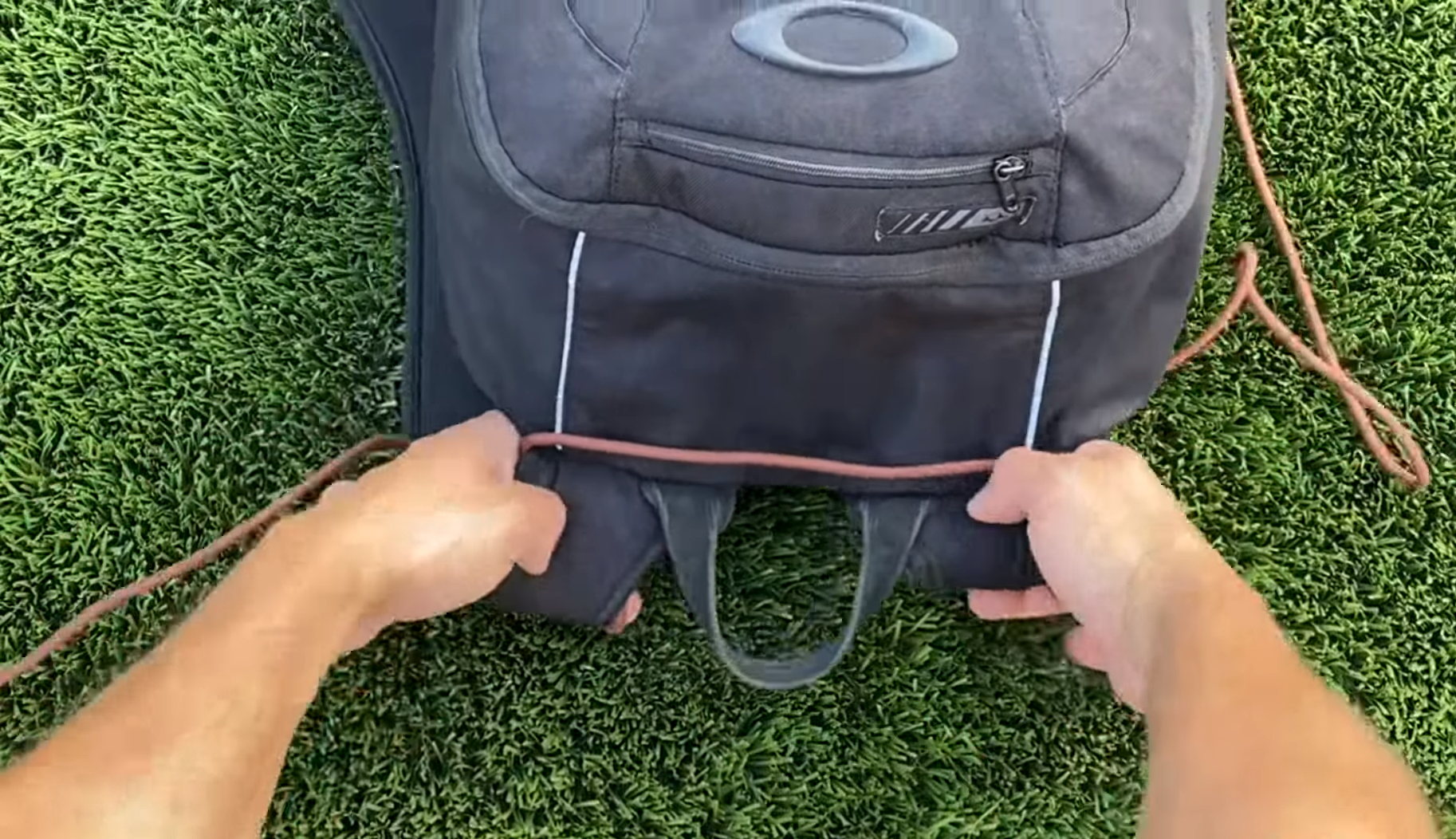
Does My Backpack Have An Internal Or An External Frame?
Before you begin attaching the bag to the backpack, determine whether or not it has an internal or an external frame. An internal frame is a lightweight metal support structure that fits inside the pack and follows the contour of your back, while an external frame is attached to the outside of the pack and helps distribute weight more evenly.
Another thing to consider is weight distribution. Make sure you’re carrying the majority of your gear in the center of your back, as this will help keep your balance and reduce strain on your shoulders and hips. Keep all heavy items close to the middle of your pack for optimal comfort on the trail!
How Big Is My Backpack?
Make sure that the bag will fit in its entirety. For this reason, you should measure the size of your backpack before buying or attaching a bag. A good rule of thumb is that a large adult-size sleeping bag should fit easily into any backpack measuring 35 liters or greater.
Since backpacks come in diverse sizes and shapes, it’s best to determine how much space is available in yours by laying out the contents on the ground and carefully measuring each item. By doing so, you can make sure that the bag fits properly while leaving enough space for other necessary items.
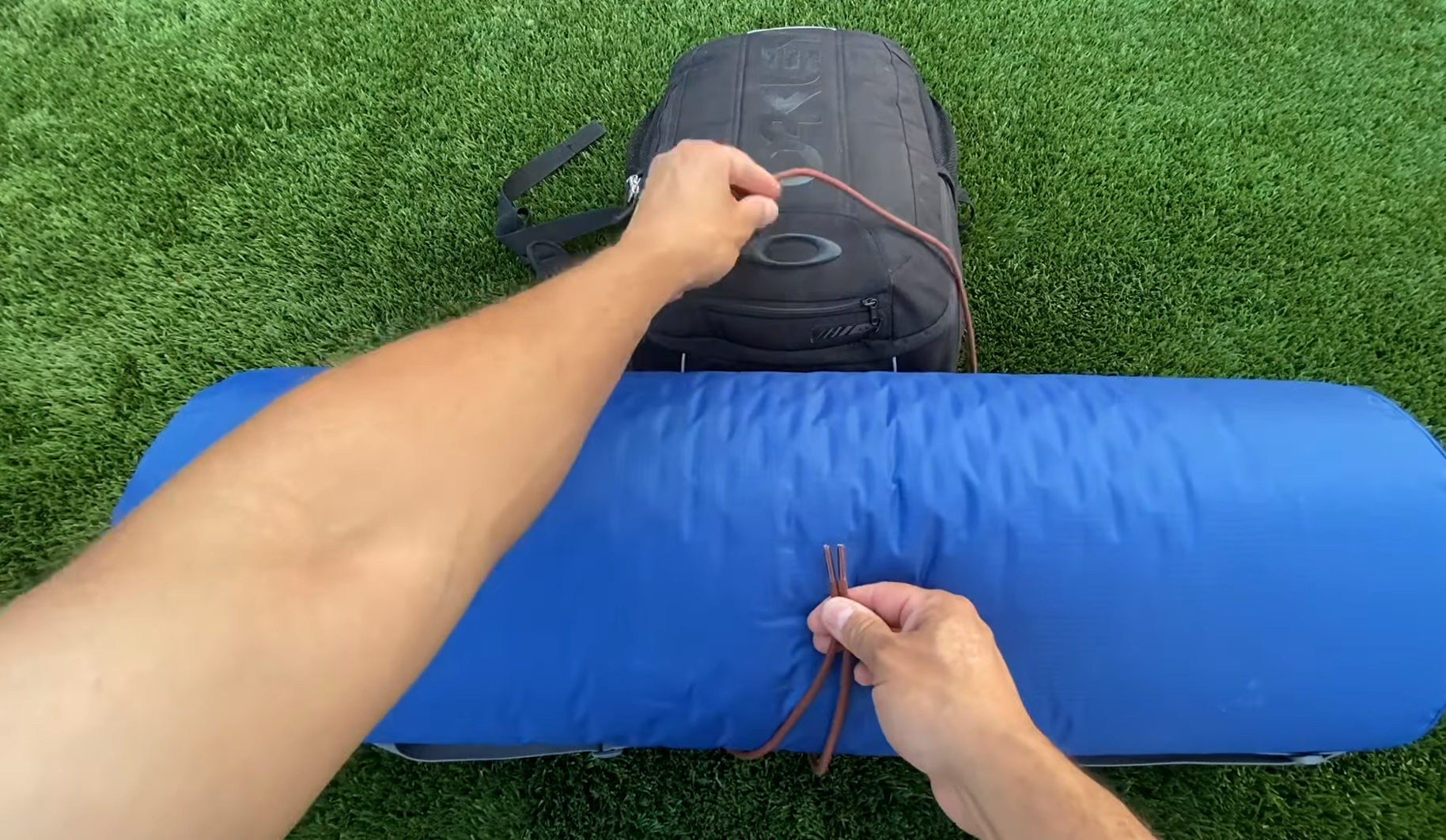
How Much Stuff Do I Have To Bring?
When packing for a backpacking trip, weight and size are key considerations that should not be overlooked. The more items you pack into your backpack, the heavier your load will be and the less comfortable your journey may become.
When deciding what items of gear to bring on a backpacking trip, prioritize the essentials such as a tent, sleeping bag, food and water; then add additional items that may improve the comfort of your journey. If there is an item that can multi-task (such as a lightweight pad) or one that can replace several things (such as a therm-a-rest), then it may be worth considering. Additionally, check the bag you plan to bring; if it is bulky and not compressible, consider investing in a lightweight down-filled model that takes up less space and can be attached more easily.
The aim should be to minimize the amount of stuff you take while still having enough supplies for your duration of stay. Once all the items are chosen, decide how best to attach them to your backpack so they don’t become an added burden during your journey.
How to attach a sleeping bag to a backpack
Attaching a bag can be a great way to ensure you have everything you need for your camping trip. It helps keep the bag secure and makes it easy to carry on your back without having to worry about it slipping off or getting lost. Here are some simple tips for attaching a bag to your backpack:
- Start by packing the sleeping bag into its own compression sack, if possible. This will help ensure that the size of the bag is minimized and allows it to fit neatly onto the outside of your pack.
- Once you’ve packed the bag, attach straps around it and clip them onto loops on the back of your pack. Make sure that the straps are securely attached and that they won’t come undone during your journey.
- If you want extra security, tie a knot at each end of the straps to ensure they don’t slip off while you’re on the go.
- Another way is using carabiners or rope loops. Attach the carabiners or rope loops to the straps on the back of your pack and then clip them onto the compression sack containing the bag. [1]
Put the sleeping bag in a waterproof bag
The best way to do this is by using a dry sack or compression sack. These sacks are designed to keep water out and also allow airflow so that your bag stays dry and comfortable. Depending on the type of backpack you have, you may be able to attach the dry sack directly onto the outside of your pack for easy access when needed.
Once you’ve got your waterproof bag, it’s time to stuff in the bag so that it fits snugly inside without leaving any extra room for air. Make sure to roll up the sides of your sleeping bag so that it doesn’t move around too much inside the waterproof bag. This will also allow for more efficient compression and make your pack lighter and easier to carry.
Once you have the bag safely tucked away in its waterproof housing, it’s time to attach it to your backpack. There are various ways of doing this including using external straps or specialized attachments depending on the type of backpack you have. Straps can be used to both fasten the dry sack securely onto the outside of the pack as well as additional straps which can be used to compress the contents even further making them less bulky for carrying. If your pack has an attachment system, then look for specialized attachments designed specifically for attaching a bag.
Check if the backpack already has straps
Many backpacks come with straps. They may be on the outside or inside of the backpack, so be sure to check all possible locations. If your backpack does have these straps, then simply follow the instructions provided by the manufacturer for attaching it securely.
If there are no pre-existing straps on your backpack, then you will need to get creative with how you attach the bag. You can use a variety of materials such as bungee cords, rope, and even webbing belts. No matter which material you choose, ensure it’s secure enough to hold the weight of the bag and won’t snap off during your hike or camping trip.
Finally you can always use duct tape! It might not look as aesthetically pleasing as other methods, but it will certainly get the job done in a pinch!
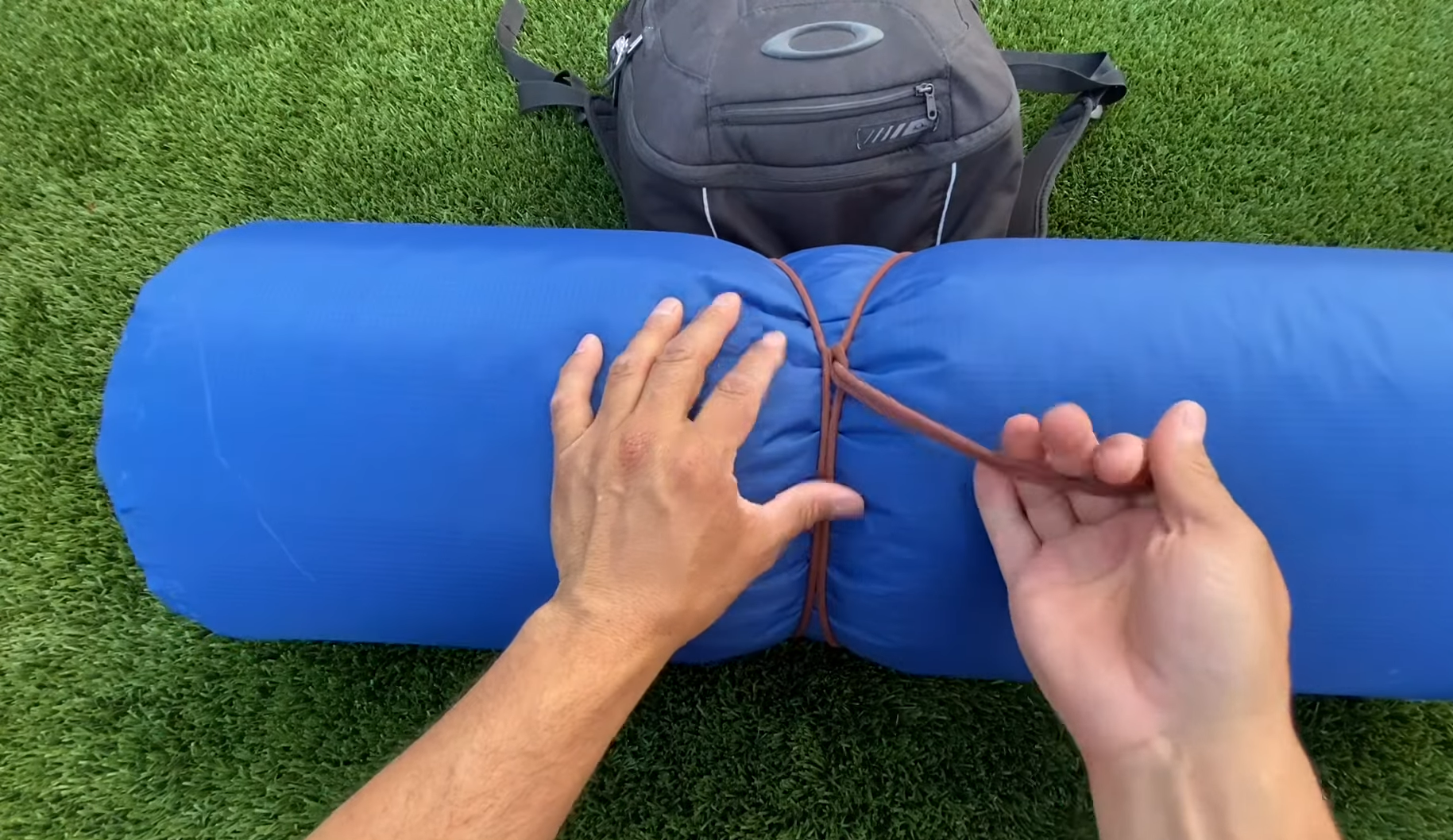
Attach the sleeping bag at the bottom of the backpack
Most backpacks have several straps located at the bottom, which you can use for securing the bag.
Start by passing one of the straps through the loops on either side of the bag, then pull it tight and fasten it securely around your pack. You may need to use multiple straps depending on how big or small your sleeping bag is.
Once you’ve secured one side of the strap to your pack, repeat with the other strap on the opposite side. This will ensure that the bag is firmly attached to your backpack and won’t slip or move while you’re traveling.
Once both straps are securely attached to your pack, adjust them if necessary so that they fit snugly around the bag and don’t sag too far away from your body. Make sure the straps aren’t too tight, as this can cause discomfort and make it difficult to access the bag.
Attach the sleeping bag at the top of the backpack
You should start by securing it at the top of the pack. Many backpacks come with straps specifically for this purpose and they are usually located near the shoulder straps and along the top panel of the pack. To use them, simply place one side of your sleeping bag through each strap and then pull tight so that they hold in place securely. If your pack doesn’t have these straps, you can always use a bungee cord or any other type of strong rope to secure the bag in place.
Once it’s secured at the top of your backpack, you can then move on to securing it to other areas. By doing this, you’ll be able to ensure that the bag remains firmly in place while you’re on the go.
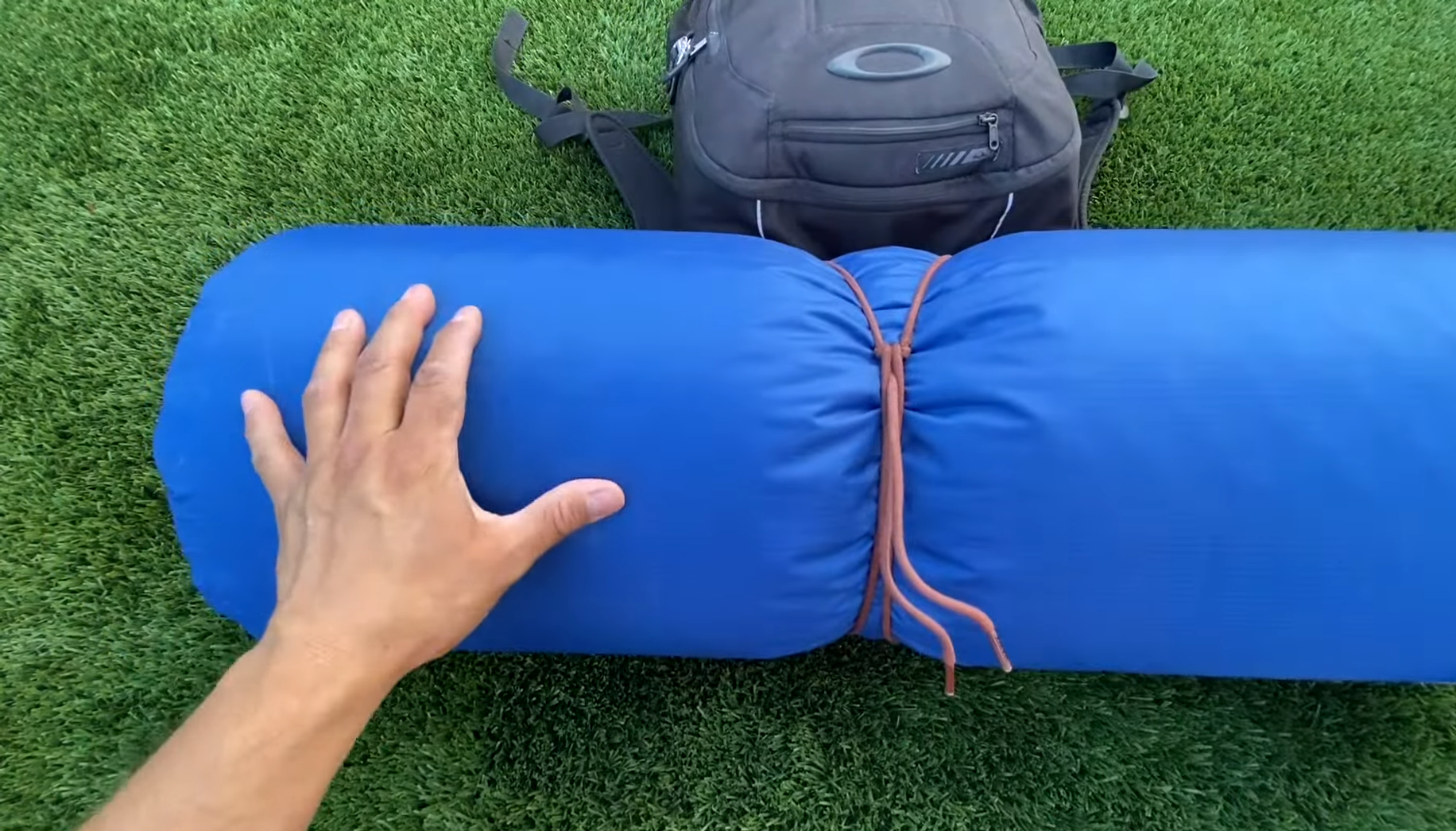
Attach the sleeping bag on the side of the backpack
It’s the easiest and most effective way of doing it. You can usually find straps on either side of your backpack that are designed for attaching gear. Simply put one strap through the loop at the top end of the bag, then pull it tight and secure it by clipping it into place with the other strap. Make sure you have enough slack in the straps so that you can easily open and close your backpack without stretching them too tightly.
Once you’ve attached one side of the bag to your backpack, repeat on the other side until both sides are securely fastened. This method will keep the bag from bulking up your pack and is great for short trips or hikes.
You can also use this method to attach other items, such as a camp pillow or tent poles, to your backpack. Just make sure that the straps are secured tightly and that whatever you’re attaching won’t interfere with the zipper of your backpack. With the right preparation and knowledge, you’ll be able to securely attach a bag or any other item you need to bring on your next adventure!
Attach the sleeping bag on the back of the backpack
Depending on what kind of straps that come with your pack, there are several different ways to go about securing it.
If you’re using tie-down type straps – like those used to strap down kayaks and other equipment – then you’ll want to ensure they’re tight enough to secure the bag in place, but not so tight that it causes any damage. Running a loop under the bottom of the pack, around the sides, and over top of your sleeping bag is a good method for doing this. If you don’t have tie-down straps, you can use compression straps, webbing or cord to hold it in place.
You should also consider adding additional padding between the pack and the bag to avoid any rubbing that might occur while you’re carrying it. A good way to do this is by placing an old t-shirt or piece of thin foam underneath the bag before attaching it.
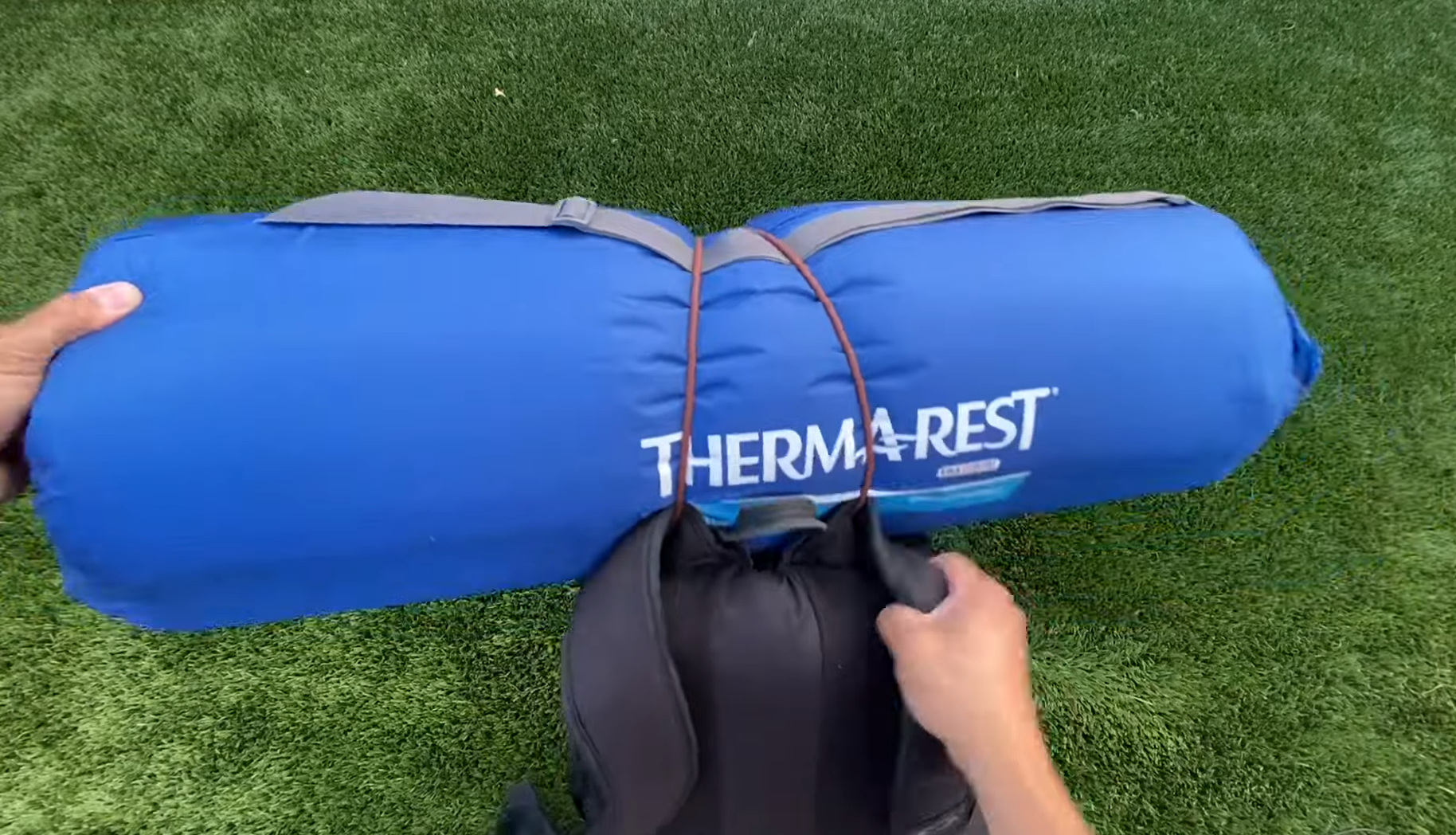
Use compression straps
All you need is a pair of compression straps, which can usually be found in any outdoor or camping store. Start by lying the bag on your backpack and securing it with the straps from the center outwards. Make sure that the straps are tight enough to keep the sleeping bag securely in place but not too tight that they create damage to your pack or put a strain on any metal frames or buckles. Once secured, just adjust as needed until you have the desired fit for both the pack and the bag.
Remember – putting too much pressure on certain areas of your backpack can cause wear and tear over time, so ensure to take some extra time when attaching the bag and double-check that all straps are tightly secured.
Use bungee cords
Bungee cords, also known as shock cords or elastic cords, are incredibly useful tools when it comes to securing a load on a backpack.
First, make sure that your bungee cord is long enough to wrap around the circumference of the bag. Then, loop one end of the bungee cord over the top of the bag and stretch it down towards one bottom corner. Do the same with the other end from another bottom corner. This will create a figure 8 pattern around your sleeping bag which will help secure it to your backpack. Now, wrap the two ends of the bungee cord around the top straps that you secured earlier. You can then adjust the tightness of your cords so that everything is held securely in place.
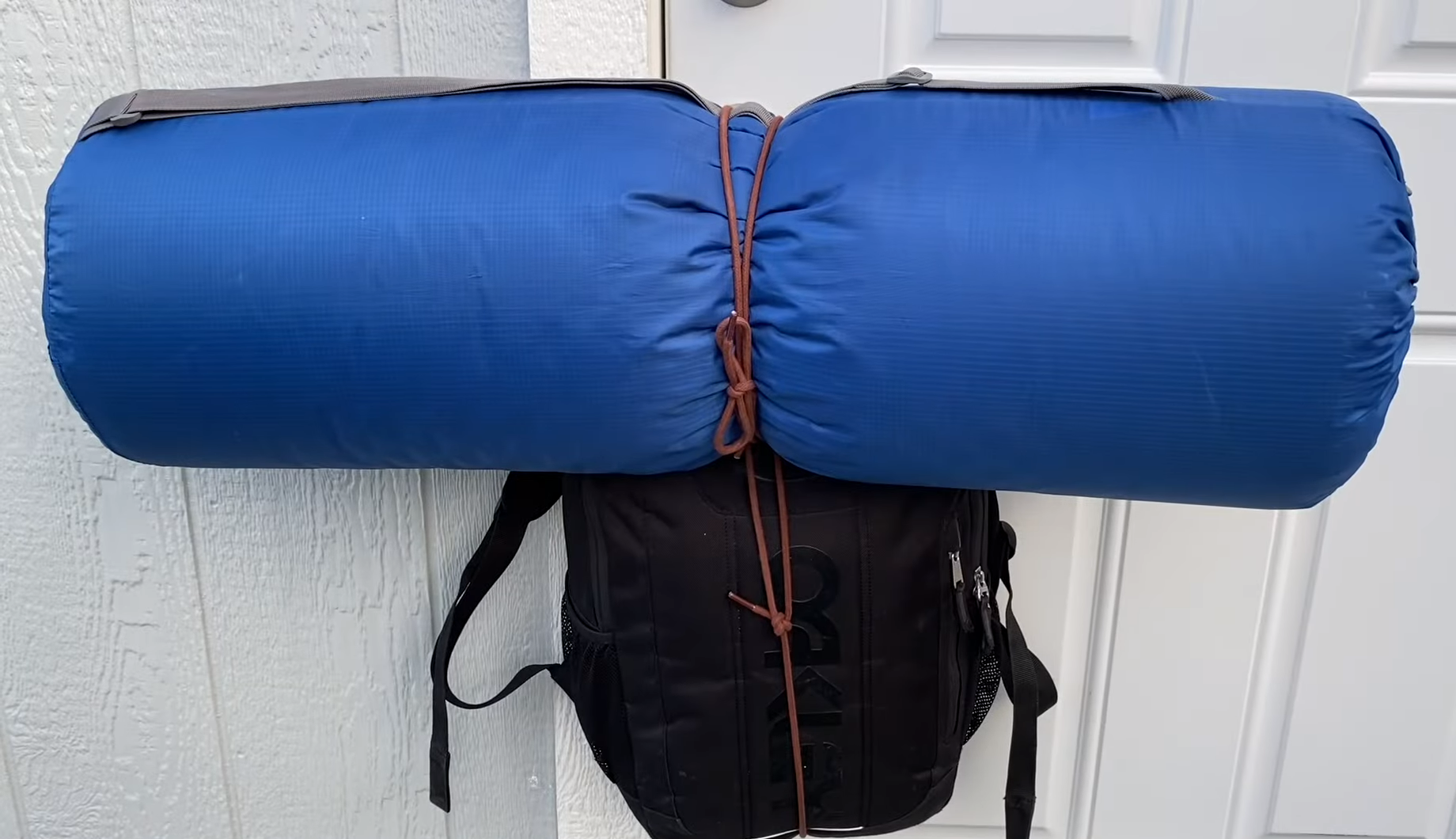
Use a bungee net
These nets are typically made of interwoven elastic bands or cords, and they can be secured in various ways. To attach the bag with a bungee net:
- Start off by laying the bungee net flat on the ground. Make sure that all of the hooks at the ends are facing up towards you.
- Place the bag in the center of the net so that it’s centered evenly across all sides.
- Stretch out each side of the bungee net and hook it onto the side loops of your backpack. Make sure to tighten each side so that the bungee net is secure and the bag won’t slip out.
- To ensure that everything is securely attached, give it a few tugs to make sure there’s no give or wiggle room. [2]
Use a belt
This method is simple, secure, and reliable. It can be used with any type of backpack and requires very few tools. To start, you’ll need a belt or webbing that is long enough to fit around the circumference of your backpack. If necessary, you can cut it down to size using scissors. Thread one end of the belt through one side of the sleeping bag’s drawstring loops and then thread the other end through the second loop before pulling it tight. Finally, tie off both ends securely and adjust as needed for a snug fit. Remember that if you have a particularly bulky sleeping bag, you may need to use an additional strap or webbing for added security.
It’s important to note that this method is not recommended for backpacks with internal frames. The weight of the bag can cause the frame to become unstable and potentially damage your pack over time. If you have an internal frame backpack, try one of the other methods.
Consider attaching the tent on the outside of the backpack
This is a great way to save internal space and keep more items easily accessible. However, this also means that you’ll have to keep an eye on the bag as it will be exposed to dirt and moisture while you are hiking.
To attach a bag on your backpack, get yourself some strong straps or cords that are long enough to wrap around both your pack and the sleeping bag securely. Make sure that they don’t slip off or loosen during your journey! You can use D-rings, clips, hooks, tensioners or just regular knots to fasten them in place.
Once everything is ready and secure, you can pack up the rest of your items inside the backpack and get going! Just make sure that you check it regularly during the journey as you don’t want anything slipping off or getting loose.
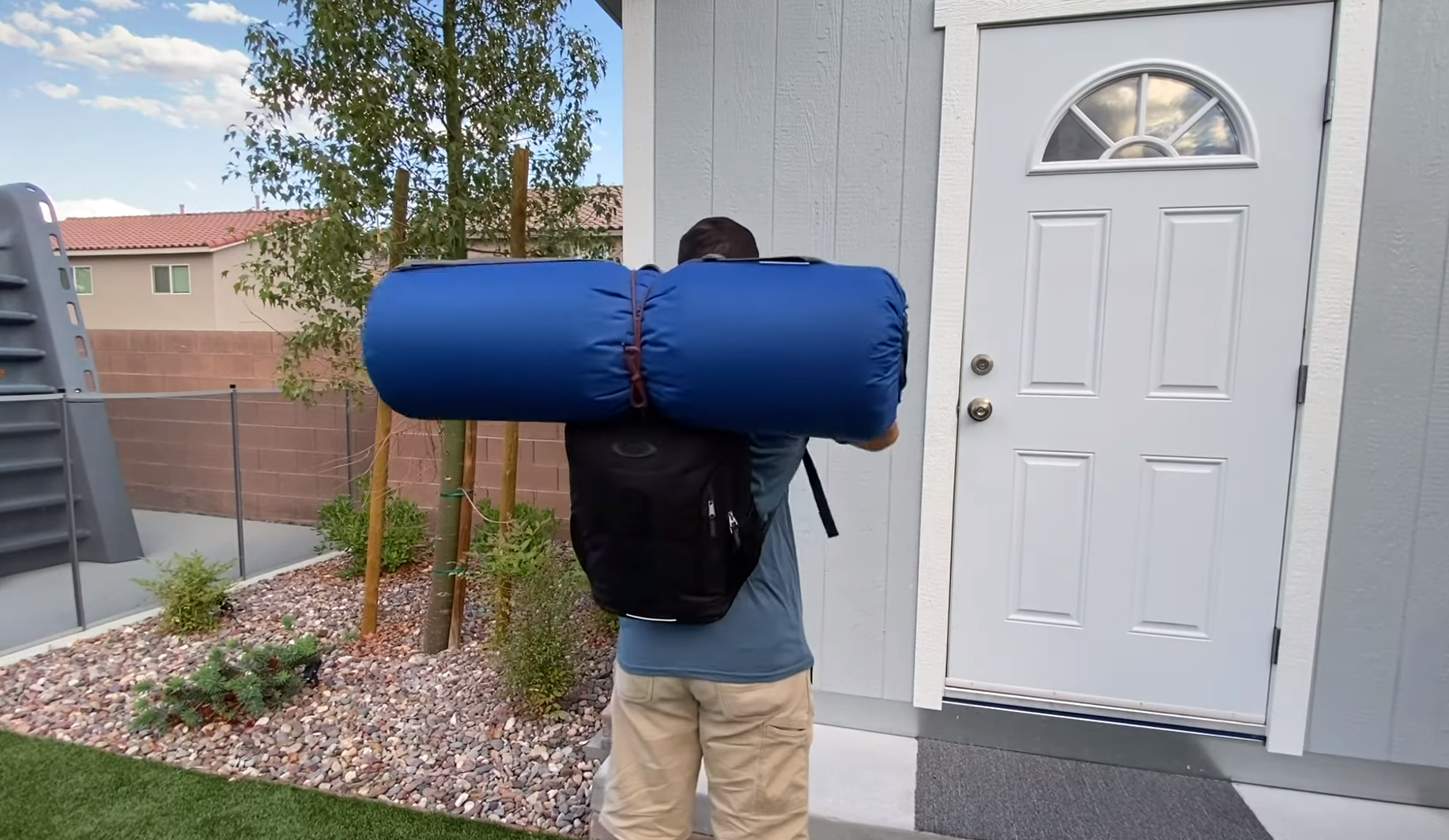
Can I Attach A Sleeping Bag To A Child Carrier Backpack?
Yes, it is possible to attach a sleeping bag to a child carrier backpack. It is important to note that the size of the child carrier backpack and the size of the bag will determine how you attach them together. The larger the backpacks and sleeping bags, the more difficult attaching them can be. For smaller backpacks and bags, however, using drawstrings or straps to secure them should suffice. If you are having difficulties securing them with these methods, consider purchasing additional straps or buckles designed for this purpose. Additionally, make sure you take time to practice adjusting the straps so that both items fit comfortably on your back while hiking or camping. [3]
FAQ
How do you tie a sleeping bag to a backpack with a rope?
Tying a sleeping bag to your backpack with a rope is relatively easy. First, you will need two long pieces of rope or cord and two carabiners. Begin by connecting one carabiner to the loop on the bag that is designed for attaching it to a backpack. Then, connect the other carabiner to either side of the backpack’s straps. Thread one piece of rope through both carabiners and tie an overhand knot at each end. Finally, thread the second piece of rope through both carabiners in the opposite direction as before and tie another overhand knot at each end. This will securely attach the bag to your backpack so you can transport it safely wherever you go! [4]
Where does a sleeping bag go in a backpack?
A sleeping bag can be attached to the outside of a backpack in several different ways. Depending on the type of bag and straps you have available, you may be able to secure it with compression straps or carabiners. If your backpack has external loops or mesh pockets, these can also be used for attaching a bag.
You should generally attach the bag at the bottom of the backpack as this is usually one of its most heavily loaded spots. This will help evenly distribute the weight and ensure that it does not shift around too much when you are walking or climbing. You should also make sure that the bag has enough clearance from any pointy objects like zippers or buckles so that it doesn’t get accidentally damaged. [5]
Be sure to use the right type of straps or carabiners so that it is securely fastened in place. If you are using compression straps, loop them around the top and bottom loops on your backpack and attach them near the center of the pack. You can also use a single strap if you have a single-loop attachment point on your pack. For carabiners, loop them through the bag’s drawstring loops and then clip them onto an external loop or pocket on your backpack.
How do you attach a sleeping bag to a normal backpack?
The answer is fairly simple: it depends on the type of backpack you have and the size of the sleeping bag. If you’re using a large internal frame backpack, then you can usually use an external attachment system to secure the bag to the frame or sternum strap. Many backpacks come with straps specifically designed for this purpose.
For smaller backpacks, such as daypacks or school bags, there are several options available. The easiest way to attach a bag is to use carabiners or clips to secure it inside your pack. Alternatively, some packs are designed with an external strap that allows you to quickly and easily attach a bag or other gear outside the main body of the pack.
How do you attach a sleeping pad to a backpack?
Attaching a pad to your backpack is a great way to save space and keep everything organized while you’re out on the trail.
One of the easiest ways to attach a bag to a backpack is with straps. Many backpacks come with built-in attachment points for straps, so all you need to do is wrap one strap around the top part of the bag, and thread it through the loop or buckle located at the bottom of your pack. Then, feed it up over the top and secure it in place by adjusting or tightening both ends of the strap. This method works best if your sleeping bag has its own hood or drawstring.
You can also attach the bag directly to the frame of your backpack, if it has one. To do this, you’ll need to use carabiners and webbing straps. First, thread two lengths of webbing through the sides of the bag and secure them in place with carabiners. Then, loop the ends of the straps around the main frame of your backpack and clip the carabiners into place to keep them secure.
Useful Video: How to tie a sleeping bag to a backpack.
Conclusion
Attaching a sleeping bag to your backpack should now be easy and secure for you since you know how to do it. It is important to make sure that the straps are fastened tightly and that the bag is secured in place. You can also use a stuff sack or compression straps for additional support. Remember, when packing a bag, always consider its weight and size as this can affect the overall weight of your pack. These easy steps will prepare you for any outdoor excursion!
References:
- https://abrokenbackpack.com/how-to-attach-sleeping-bag-to-backpack/
- https://www.advnture.com/how-to/attach-sleeping-bag
- https://wildernessredefined.com/how-to-attach-sleeping-bag-to-backpack/
- https://www.advnture.com/how-to/attach-sleeping-bag
- https://backpacks.global/how-to-attach-a-sleeping-bag-to-your-backpack/





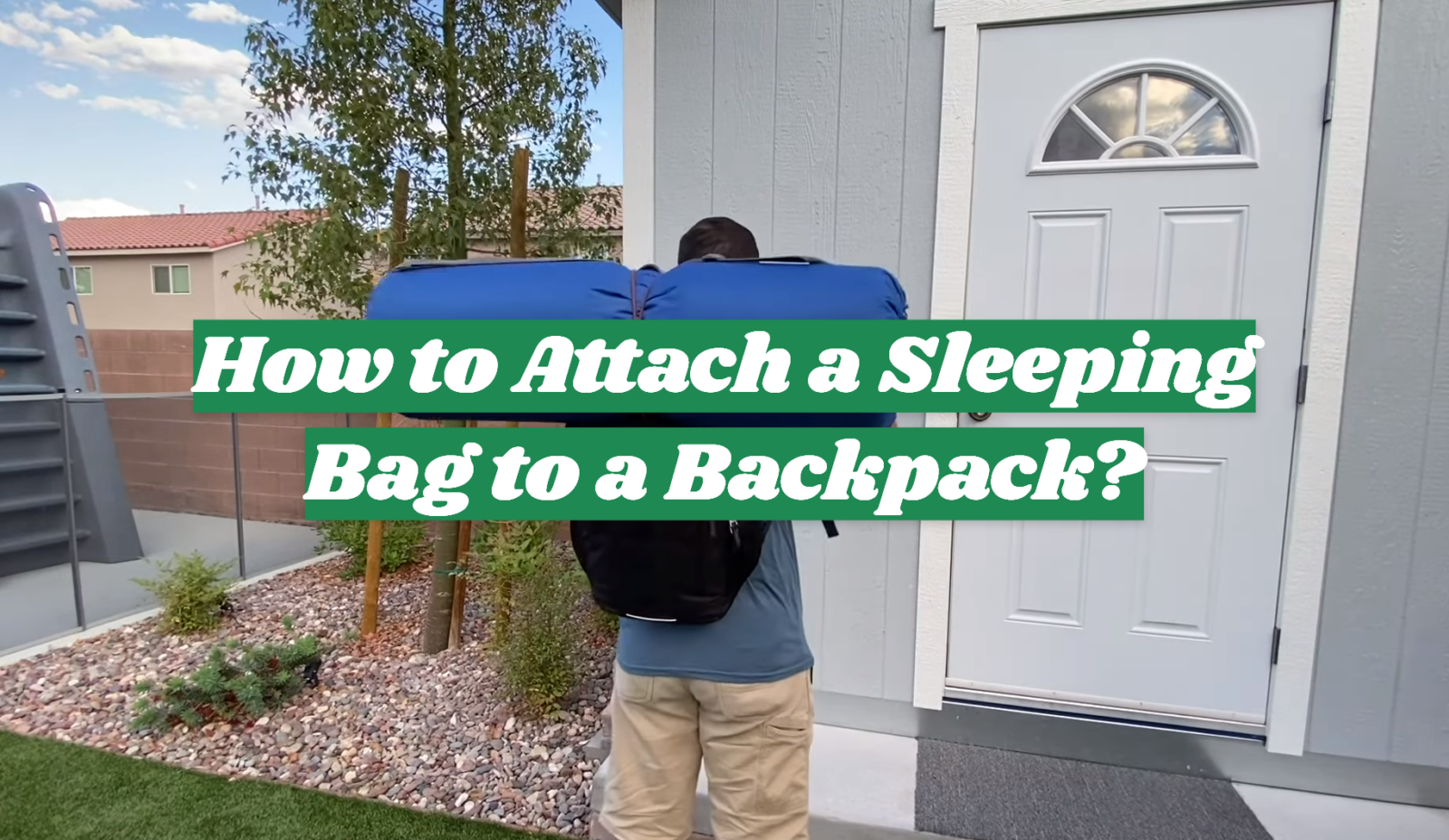
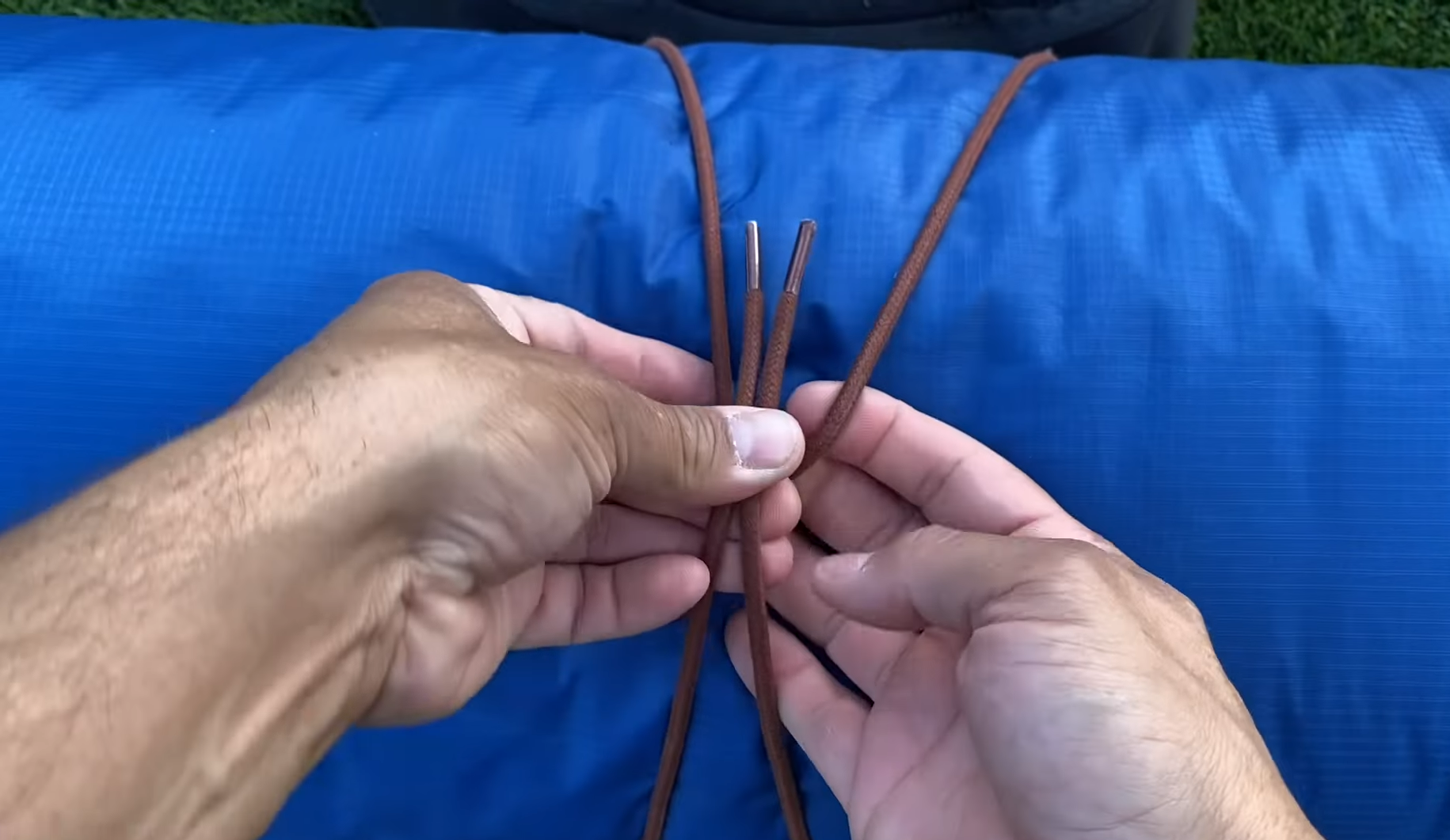


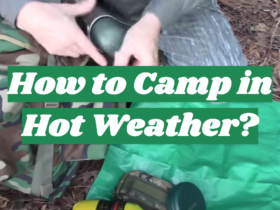

Leave a Review